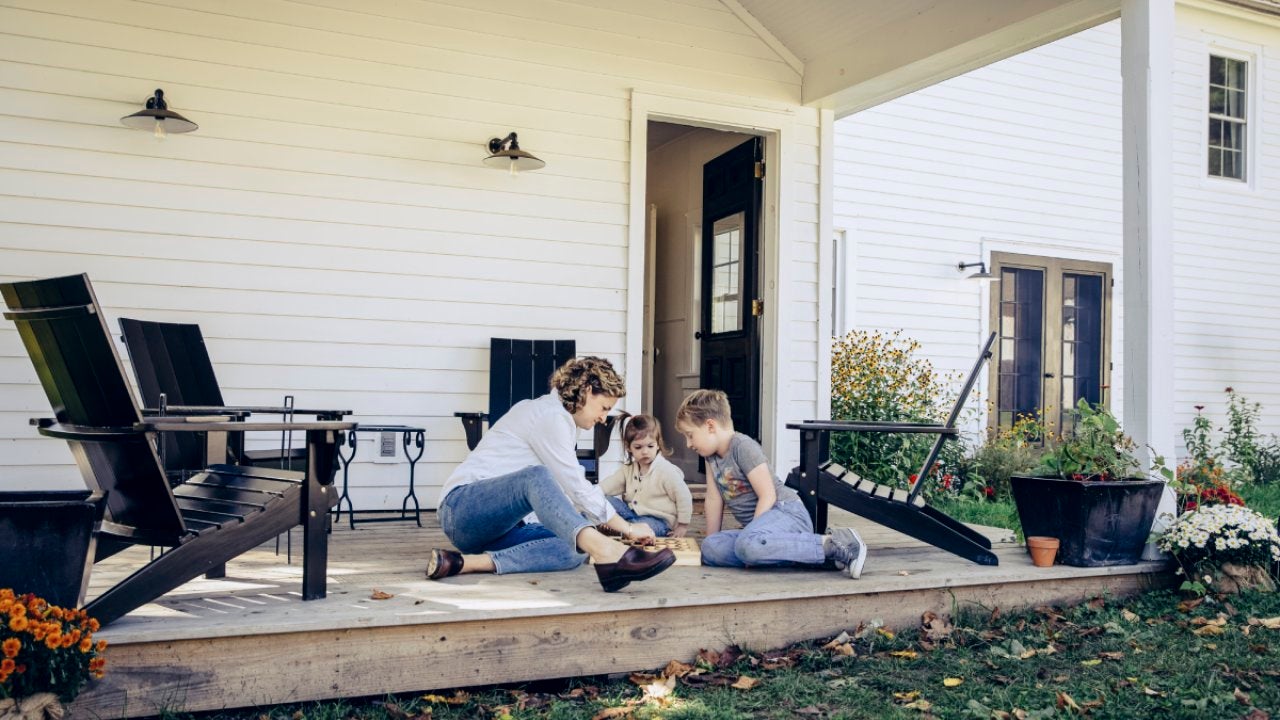How to calculate square feet — and why a home’s square footage matters

When you buy a new home, or sell your current one, thinking about how to measure its square footage probably isn’t top of mind. And while it may seem like an inconsequential metric, it’s one of the most important factors that determine a property’s value.
“If you mis-measure a property, it’s a domino effect — it’s going to throw the whole value off,” says Marlon Day, senior director of Quest Valuation & Advisors in Atlanta.
- The median price per square foot for a home in the U.S. is $227, according to February 2025 data from Realtor.com. However, price per square foot can vary greatly depending on location.
- The average size of a new-construction single-family home in the U.S. in 2023 was 2,514 square feet, according to Statista.
- By contrast, research from the International Association of Certified Home Inspectors shows that the country’s average home size was 1,500 square feet in 1970 and just 983 in 1950.
- The average bedroom size, according to CRD Design Build, is roughly 132 square feet. There are specific requirements regarding what can be considered a legal bedroom, including required square footage, ceiling height and modes of egress, which vary from state to state.
Why is square footage important?
There are plenty of reasons you might want to know how to calculate the square feet of a house, whether you’re looking to sell a property or renovate to add more space.
If you’re preparing to list your home for sale, determining the property’s exact size is a crucial factor when setting your asking price. “For a home appraisal, we’re going to compare it to comparables or ‘comps,’” says Day, who looks for homes of similar size in the immediate area. An inaccurate square footage measurement could potentially result in an inaccurate appraisal price.
Square footage (often abbreviated as SF or SQFT) also matters in real estate deals that involve a mortgage, for similar reasons. The lender will want that info to help verify what the property is worth.
However, knowing your home’s square footage can come in handy in other ways as well. For instance, if you decide to finish a previously unused part of your house — say, a basement or attic — you may need to provide the square footage to obtain a building permit. Likewise, if your county or municipality assesses higher property taxes than you think you should owe, confirming the square footage can be a point in your favor toward getting the amount reduced.
How to calculate the square feet of a house
When preparing to measure the square footage of a home, be it a house, condo, or townhouse, start with a few simple supplies:
- Paper and pencil
- Calculator
- Measuring tape and/or laser measuring tool
If the property is a perfect rectangle, simply measure the length and width and multiply those two numbers together. For example, if your one-story house is 60 feet wide by 40 feet long, then your property is 2,400 square feet (60 x 40 = 2,400).
However, most properties have more complex floor plans. When this is the case, it’s helpful to follow these simple steps to measure square footage.
- Draw a rough sketch of your entire space, labeling all of the rooms you need to measure. Include hallways and vestibules as their own “room.”
- Measure the length and width, in feet, of each room. Then, multiply the length by the width to calculate that room’s square footage. For example: If a bedroom is 12 feet by 20 feet, it is 240 square feet (12 x 20 = 240). For each room, write the total square footage in the corresponding space on your sketch.
- Once each room is measured, add up all the measurements to determine your home’s total square footage.
Keep in mind: If you live in a tract home, condo or townhouse community, you may be able to request architectural drawings or master builder plans of your home’s floor plan. These may show your square footage, already calculated.
What to leave out when measuring
A good rule of thumb to ensure you’re taking proper measurements is to exclude space you can’t walk on or live in. These types of spaces do not count as “gross living area.”
“Someone might think, ‘If I get the measurement of my first floor and I have a two-story house, I just multiply that by two,’” Day says. However, if that first floor includes a double-height foyer, for example, you can’t count the non-usable space.
In addition, basements and garages don’t generally count toward total square footage, even if they are finished. Basements are typically excluded because they are built below grade, meaning below ground level. If your state does allow basements to be included in the total square footage of a home, though, you’ll likely need an ingress and egress, or a safe way to enter and exit from the basement directly to the outside.
Finished attic spaces — with some regulations, including ceiling heights — can count toward the total square footage of your home. If you are planning to sell, work with your real estate agent to craft a listing that accurately reflects your property.
When in doubt, ask a pro
Many properties are uniquely shaped and not easily measurable. If calculating the square feet of your particular house leaves you scratching your head, consider hiring a professional appraiser to do it. The average appraisal cost for a single-family home typically runs about $350.
While two different professional appraisers could evaluate the same home and come up with slightly different square footage figures, they do all aim for scientific accuracy. “We’re always shooting for somewhere between 1 and 3 percent variance,” Day says.
FAQs
You may also like


Price per square foot: How and why to use it




